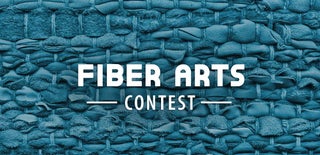Introduction: Embroide-llama
Embroider yourself a llama because...why not?
I decided to upcycle another one of my sweaters into a handbag but I wanted to add something special to it. Since I like llamas very much, I didn't need to think too long about what to embroider. This project turned out to be a lot of fun, therefore, I'll share it with you and who knows, maybe you get inspired!
Fancy another embroidery tutorial? You might be interested in my Amish stumpwork instructable.
Supplies
- embroidery ring
- fabric to embroider on, like canvas
- embroidery cottons (I used the colors cream, orange, red, turquoise and black)
- embroidery needle
- scissors
- pencil
- a piece of paper
- circular stencils
Step 1: Prep and Make the Contours
1., 2. I wanted the embroidery to be attached to the sweater but embroidering directly on it wasn't an option. I placed the canvas on top of the sweater and then fastened both fabrics in the embroidery ring.
I then sketched the llama on a piece of paper, cut it out and used this stencil to trace it on the canvas. I traced also the face and the saddle.
3., 4. I started by embroidering the contours of the body without head, legs and saddle. I used split stitch - you can learn more about it here.
5. You can see the finished contour in picture 5.
Step 2: Ears, Legs, Face
1.-4. I went on to the ears and legs, I filled those with simple straight stitches "there and back".
5. I embroidered the face features with a black thread and a simple backstitch, I just photographed it later, that's why you can see more embroidery in the picture.
Step 3: Saddle
I embroidered the saddle with various colors and geometric shapes. Use your imagination and just embroider whatever you want on the saddle.
You can do a little research online to see the colors and patterns of the saddles for example in the Peruvian mountains.
All the stitches I used here are really nothing complicated, most of it is just the backstitch.
Step 4: Body
1., 2. To fill the body with embroidery I chose circular flower shapes of different sizes. I used a ruler with a circular pattern to make the flowers round. I embroidered from the edge to the center and sometimes the other way round, each has a little different effect.
3. No need for the flowers to be filled regularly, not even the center needs to be really in the center. Experiment with moving the center closer to the edge, with the size of the flower and even with the thickness of the thread. It looks really good when the flowers are different. I used 16 and 8 threads most of all but there are also a few flowers made with just 6 threads.
4., 5. I also used just parts of the flowers at the contour.
Step 5: Rein
1. The next step was the rein. First, I made one straight stitch for every part of the rein and then I came back in the first hole.
2. I then wrapped the thread around that straight stitch and put the needle through the second hole.
3. For the central part of the rein I did the same like when I wanted to make a straight stitch but I left the thread very loose so that I could form a curve.
4. The lowest part of the rein was a straight stitch again.
Step 6: Fringe
Rein fringe
1. There was a slight difference between the fringe at the rein and at the saddle. I started with the rein. I cut 8 thick threads of the same length (about 2,5 cm) and then wrapped a longer thread around their center.
2. Then I directed all the 8 threads down.
3. I wrapped the longer thread around the rein...
4. ...wrapped one end about half a centimeter under the center of the fringe (where the threads bend) and tied a knot.
5. One of the ends was sticking out so I just pulled it through the knot.
6., 7. Now the fringe was done but with threads of different length, that still needs fixing.
8. The picture nr. 8 shows the cut fringe.
Saddle fringe
9. Now the fringe at the saddle was made from a smaller amount of threads and it was slightly thinner. Instead of wrapping a thread at the middle I sew the middle of the threads to the saddle. The rest was the same like with the rein fringe - I cut another piece of thread, wrapped it about half a centimeter under the point where the threads bend, tied a know and pulled the ends through the knot. I cut the fringe to be all the same length.
10. All fringe done!
Step 7: Last Cut
My llama was done but I had one more thing to do - cut off the fabric around it. What you do with your llama is up to you and it depends on what you embroidered on. I think it would be really cute on a cushion or even just a wall hanging. Let me know if you have any other ideas!

Runner Up in the
Fiber Arts Contest











